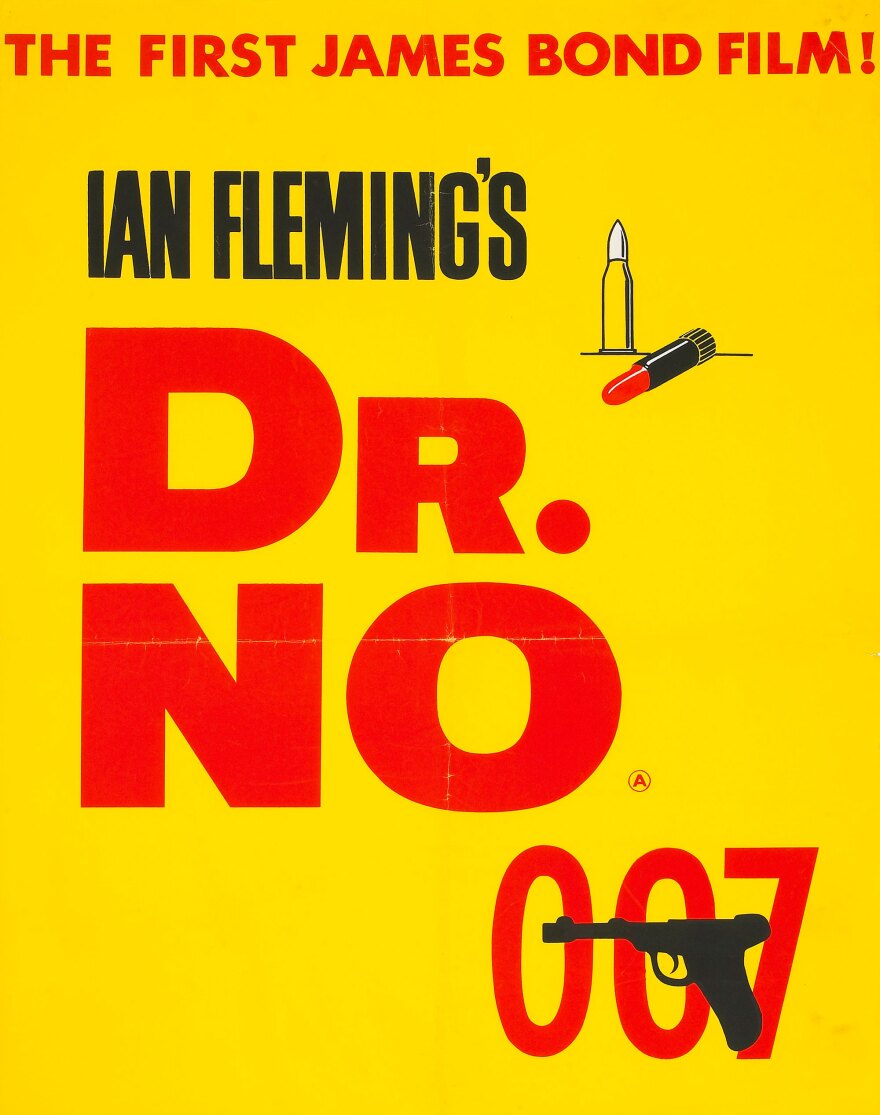There is something deliciously enticing about the advance poster for the 1962 movie Dr. No. It featured a bright yellow Technicolor background, lipstick, a gun and the numeral 007 — all teasing the audience about what was to come. "The First James Bond Film!" (Their exclamation point, not mine.) It was part of a campaign that launched the celluloid franchise that today, half a century later, is still one of the biggest draws of the big screen.
In the new book, James Bond: 50 Yearsof Movie Posters, production designer Dennis Gassner (currently working on the newest Bond movie, Skyfall) posits that the key role of a movie poster is to describe the "essence of the film." In this lavish coffee-table book, we get to see the essence of James Bond movies as defined by their posters around the globe and across the decades.
In this age of Facebook, YouTube and Twitter, when movie trailers are available at the swipe of a smartphone, it is hard to imagine a time when movie posters were, a) so important, and b) highly tailored for particular markets. But what is clear about the Bond franchise is that as the movies gained popularity, some uniform design elements became key, and the essence of Bond had a universal language.
By just the second Bond movie, From Russia with Love, we see the emergence of a "global" design as befits the globalizing of the brand. The suave pose once more, Connery staring confidently out of the poster, tuxedo-clad and gun in hand; a sultry belly dancer; a glamorous locale — Istanbul — and, of course, the seductive temptress that Bond will not be able to resist. From the U.K. to France and Italy, Sweden to Greece and West Germany, the universal language of Bond was spoken by these images transforming him from an action-movie hero to an iconic brand.
These posters use glamour, action, exotic travel and, of course, sex to sell the Bond franchise. But what is particularly interesting about this book is how it celebrates the art of the movie poster. In the 1960s, movie posters literally were art, painted by renowned artists from around the world (Dr. No), a skill lost now except perhaps in India. Montage styling married cutout photographic images with art (Licence to Kill). And in 2008, promotions included the simplest of photos (Quantam of Solace). The evolution of these posters reflects the evolution of the film Bond, from cartoonish escapism, exemplified by Roger Moore's tenure as Bond, to the hardened, complex Bond of Daniel Craig. This book takes us on a walk through the history of movie posters over the past half-century with one of cinema's most enduring brands.
Copyright 2023 NPR. To see more, visit https://www.npr.org. 9(MDAzMjM2NDYzMDEyMzc1Njk5NjAxNzY3OQ001))













